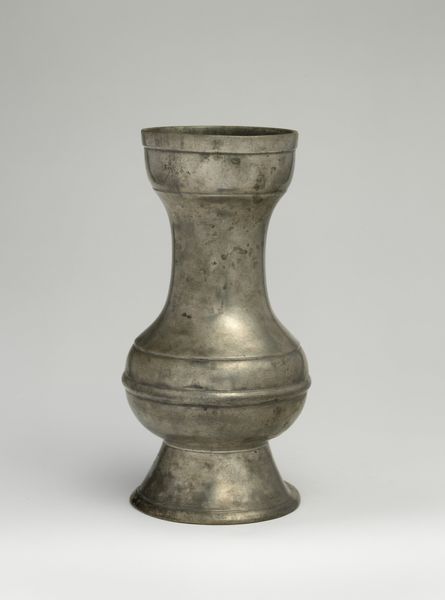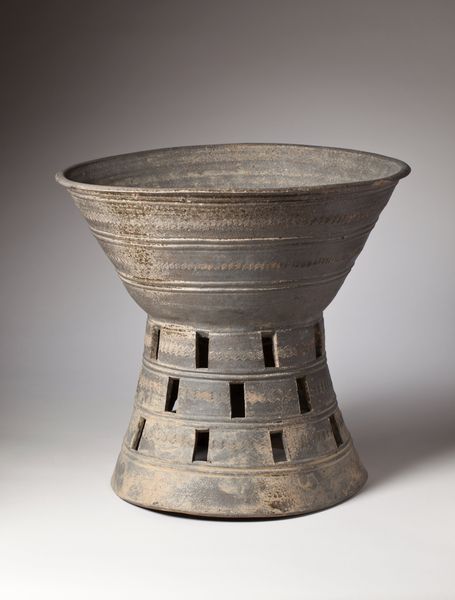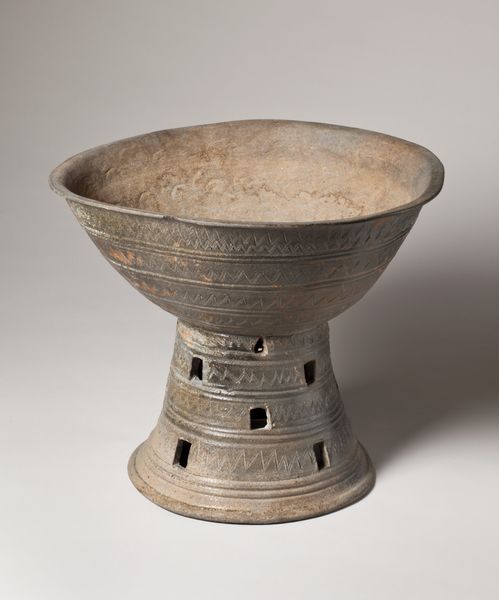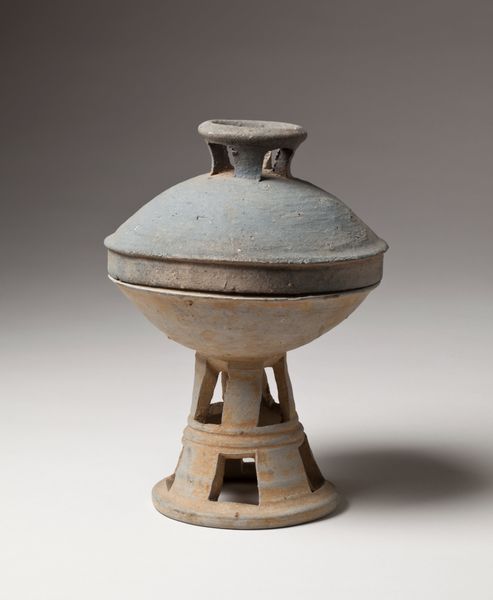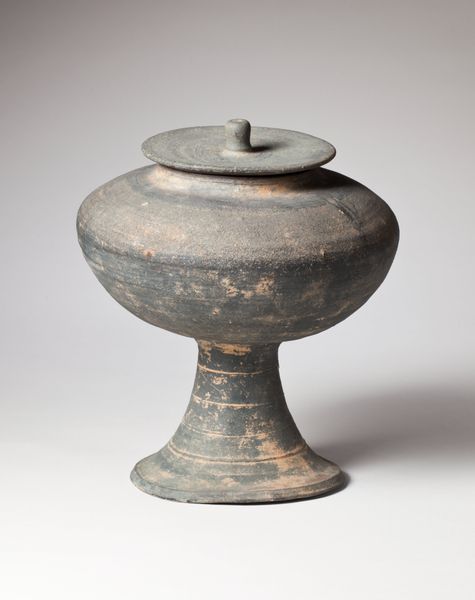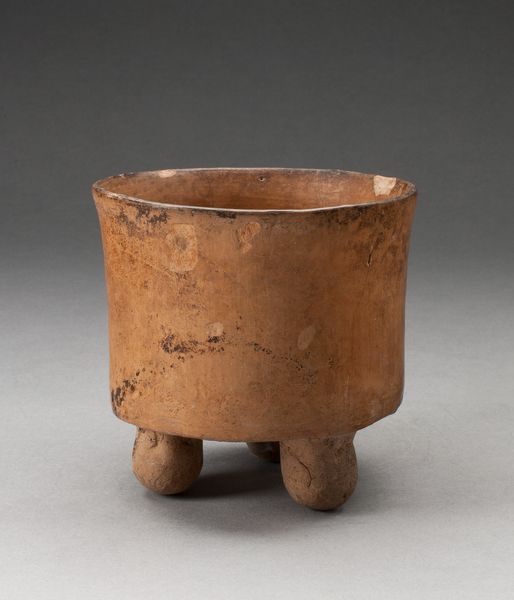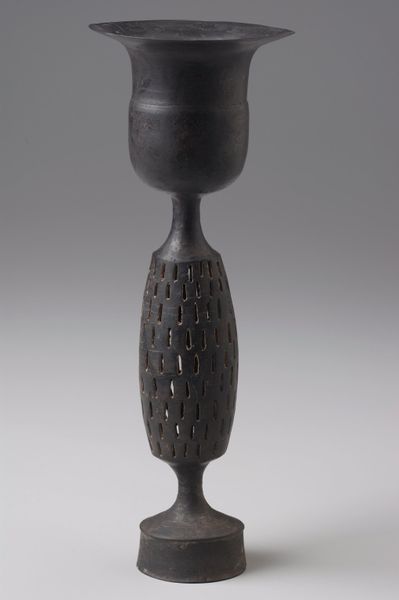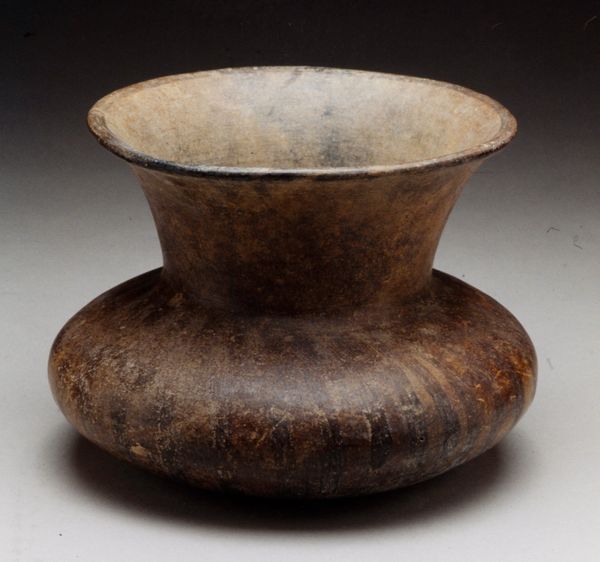
ceramic, sculpture
#
sculpture
#
asian-art
#
ceramic
#
form
#
geometric
#
sculpture
#
prehistoric
#
decorative-art
Dimensions: 8 1/2 x 5 1/4 x 5 1/4 in. (21.59 x 13.34 x 13.34 cm)
Copyright: Public Domain
This Stem cup, from the Longshan culture, sits here in the Minneapolis Institute of Art, and is made of earthenware. Think about how the maker worked with the raw clay, pinching and pulling, building this elegant form from the earth itself. The surface is smooth but not perfect, bearing the marks of its making. The dark, almost metallic sheen comes from burnishing, polishing the clay before firing, which is such a manual and physically intimate act. Notice the subtle striations on the cup. It's almost like the rings on a tree, each line representing a moment, a decision, a touch. These little vertical marks on the base gives it this wonderful sense of texture. It reminds me a bit of some of Eva Hesse's sculptures - her use of industrial materials to create something so organic and human. Both Longshan and Hesse understand that the beauty lies in the process, in the act of creation. What do you think?
Comments
minneapolisinstituteofart almost 2 years ago
⋮
When distinctive black wares were first excavated in 1930, the Neolithic culture responsible for their production was named Longshan, after a nearby town in present-day Shandong Province in northeast China. Active during the third millennium B.C.E., Longshan culture thrived and its artisans produced some of the most sophisticated and elegant forms of any ancient culture. Made of fine-grained clay turned on a potter's wheel, Longshan ware is characterized by its astonishingly thin walls and bold, geometric silhouettes. As is the case with the present example, the stems of these cups often sport a bulbous embellishment, perforated by "arrow" slits. Although typically devoid of painted decoration or clay appliqué, Longshan wares were fired in a reduction kiln atmosphere which darkened their surfaces. With burnishing, the surface took a handsome metallic sheen.
Join the conversation
Join millions of artists and users on Artera today and experience the ultimate creative platform.

